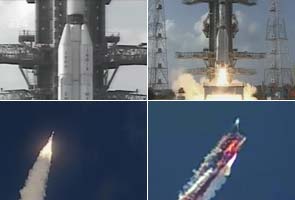The Indian Space Research Organisation (ISRO) failed to launch again. This time India’s Geosynchronous Satellite Launch Vehicle (GSLV) blew up shortly after lift-off.
After the last GSLV (D3), which used the first indigenous cryogenic engine, failed on April 15, 2010, ISRO had decided to use a pre-purchased Russian cryogenic engine for Saturday’s launch.
“When destruct command was given, the vehicle was at a distance of 2.5 km from Sriharikota coastline. The debris has fallen into the sea,” ISRO Chairman K Radhakrishnan said during a press briefing.
The satellite, GSAT-5P, was expected to fulfill telecommunication and weather needs and was built at a cost of Rs. 150 crore. It was eventually expected to replace INSAT-2E that was sent up in 1999.
An earlier attempt, powered by a Russian cryogenic engine, failed in July 2006 while a more recent attempt in April this year with India’s first indigenous cryogenic engine deviated after take-off.
Chandrayaan II was set to be launched with GSLV in 2013, but after today’s failure that launch will be reviewed.

